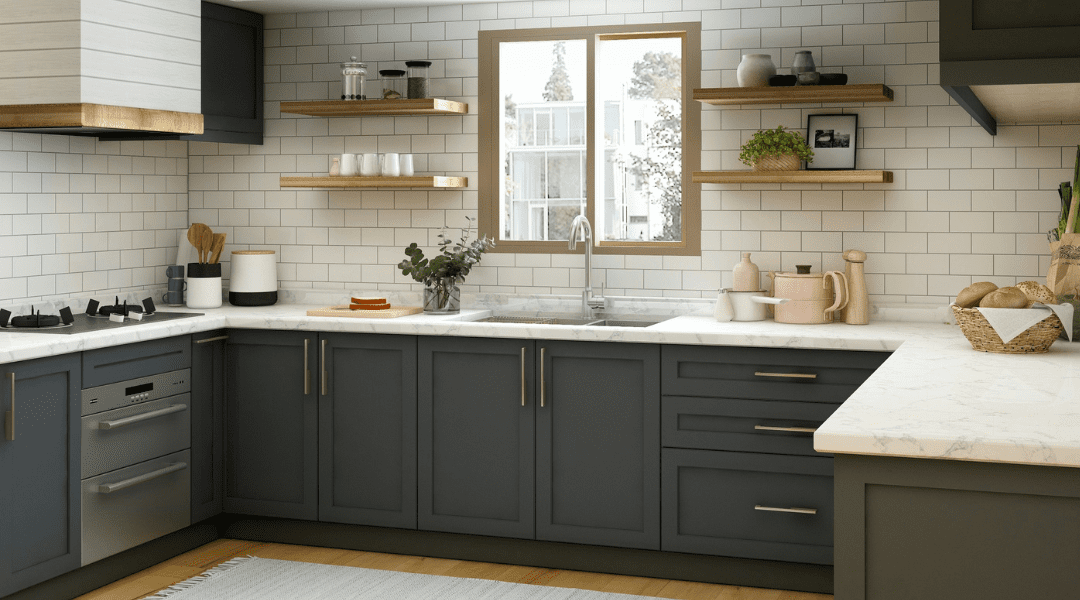Have you ever wondered how long your new kitchen will last? When we say timeless kitchen design, that doesn’t mean that your new kitchen is going to last forever or be in style forever.
Your kitchen is one of the most heavily used spaces in your home. And that means there’s going to be some wear and tear over the years. This is why it’s really important to use quality material when you’re remodeling your kitchen.
Even if the craftsmanship and the material in your kitchen are top notch, chances are at some point in a few years, your kitchen is going to start looking a bit outdated. And as new material and products come into the market, you will want to change things up in your kitchen.
So, how long should your kitchen last? Expect to remodel your kitchen about every 10-15 years if you don’t want your home to look outdated.
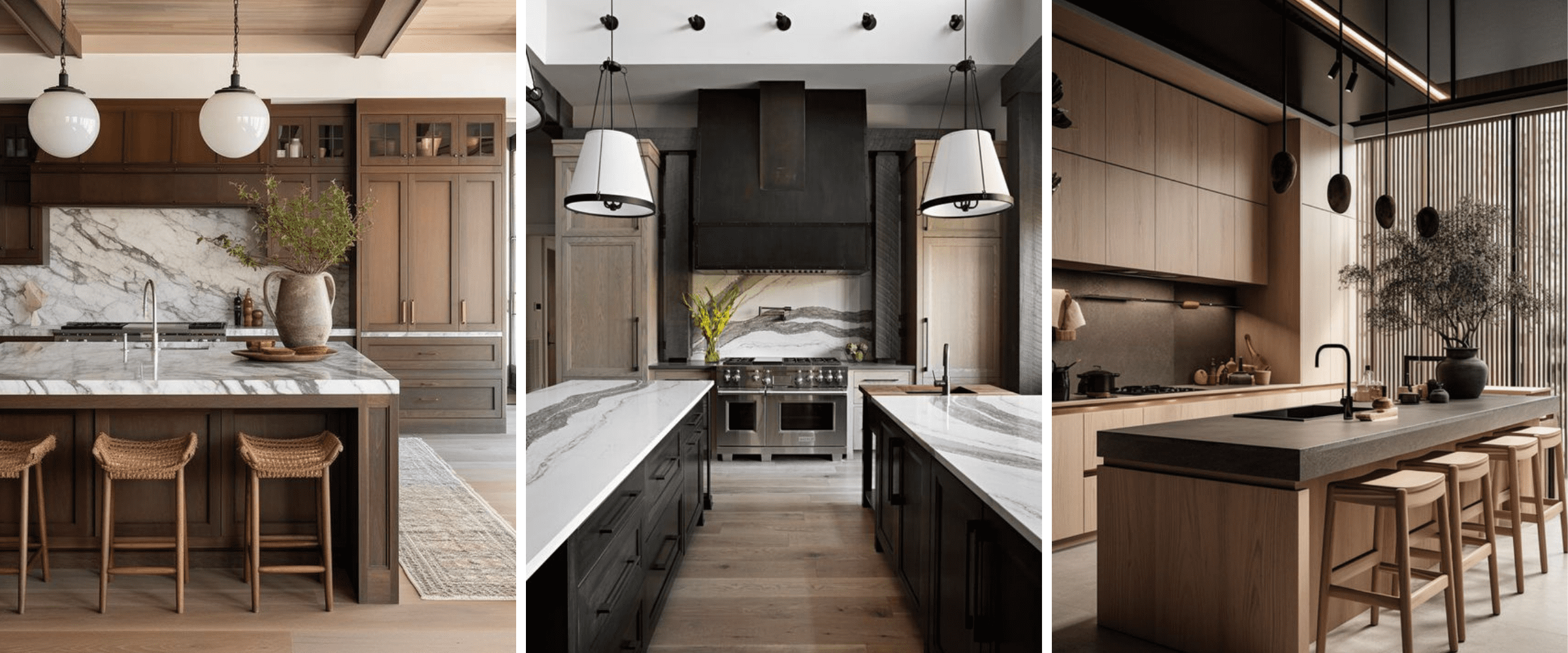
The kitchen isn’t just a space to prepare meals; it’s a command center, a dining area, and a place of gathering. Whether you’re a culinary enthusiast, a parent juggling meal prep and family life, or a social butterfly with a penchant for hosting, your kitchen needs to align with your lifestyle, offering both efficiency and aesthetic appeal.
If you’re looking at remodeling your kitchen in the near future, we got some kitchen design ideas where functionality meets sophisticated style.This blog post is your guide to transforming the everyday kitchen into an extraordinary space, balancing practical needs with creative design solutions.
From space-saving ideas and smart technology to sustainable materials and budget-friendly tips, we’ll cover a range of concepts to inspire your next kitchen makeover.
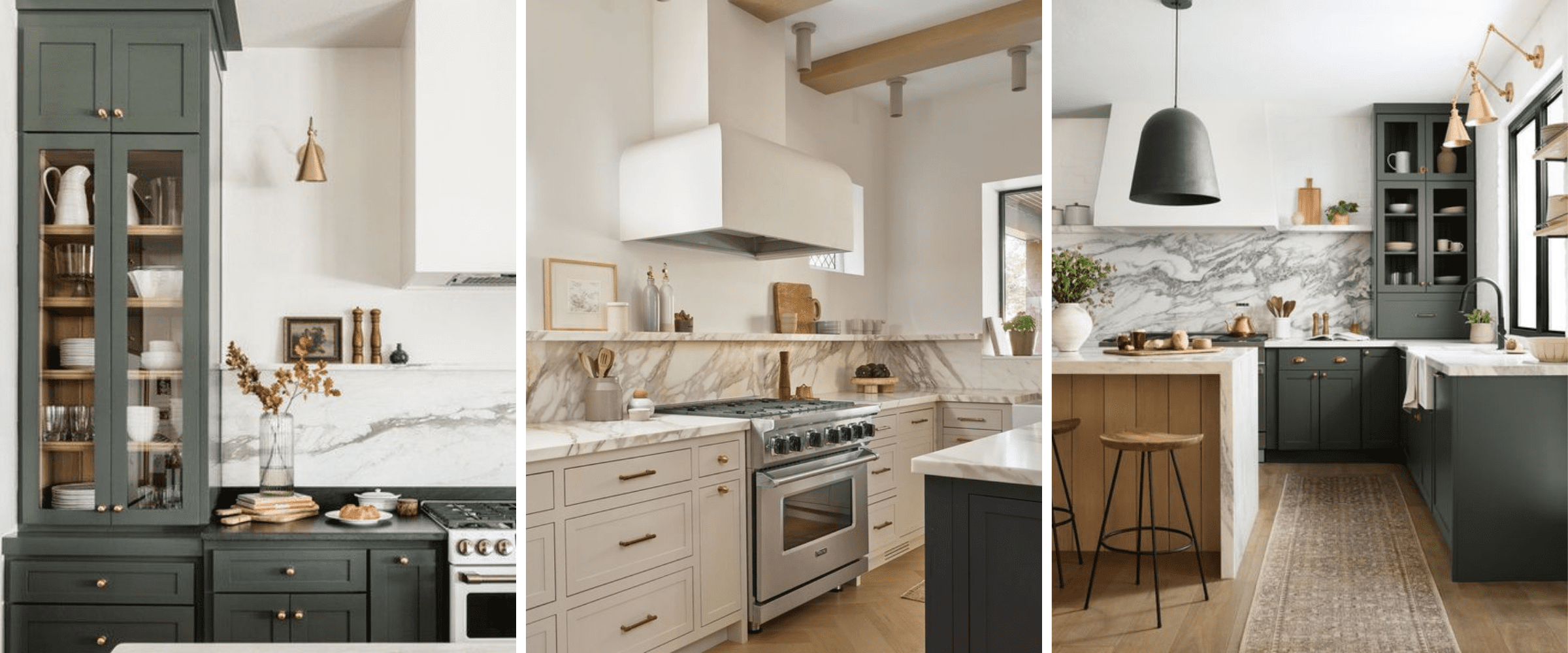
Maximizing Space and Efficiency
I like to start the kitchen design process by looking at function first. That typically involves figuring out how to maximize the space and make it work more efficiently. The challenge is to create a kitchen that feels open and spacious, yet houses everything you need.
Let’s explore how you can make the most of every inch of your kitchen.
Space-Saving Designs for Compact Kitchens
Small kitchens demand creativity. Fold-down tables or extendable counters that offer extra prep space when needed and tuck away easily can be helpful when you’re tight on space.
I love the idea of using an extra large island if possible in lieu of a kitchen table. Bonus with this approach is that you get loads of storage in the base of the island. Not just the extra counter space.
In a small space, you always have to think about how to take advantage of your vertical space. Taller cabinets or open shelving can make a world of difference in a tight space.
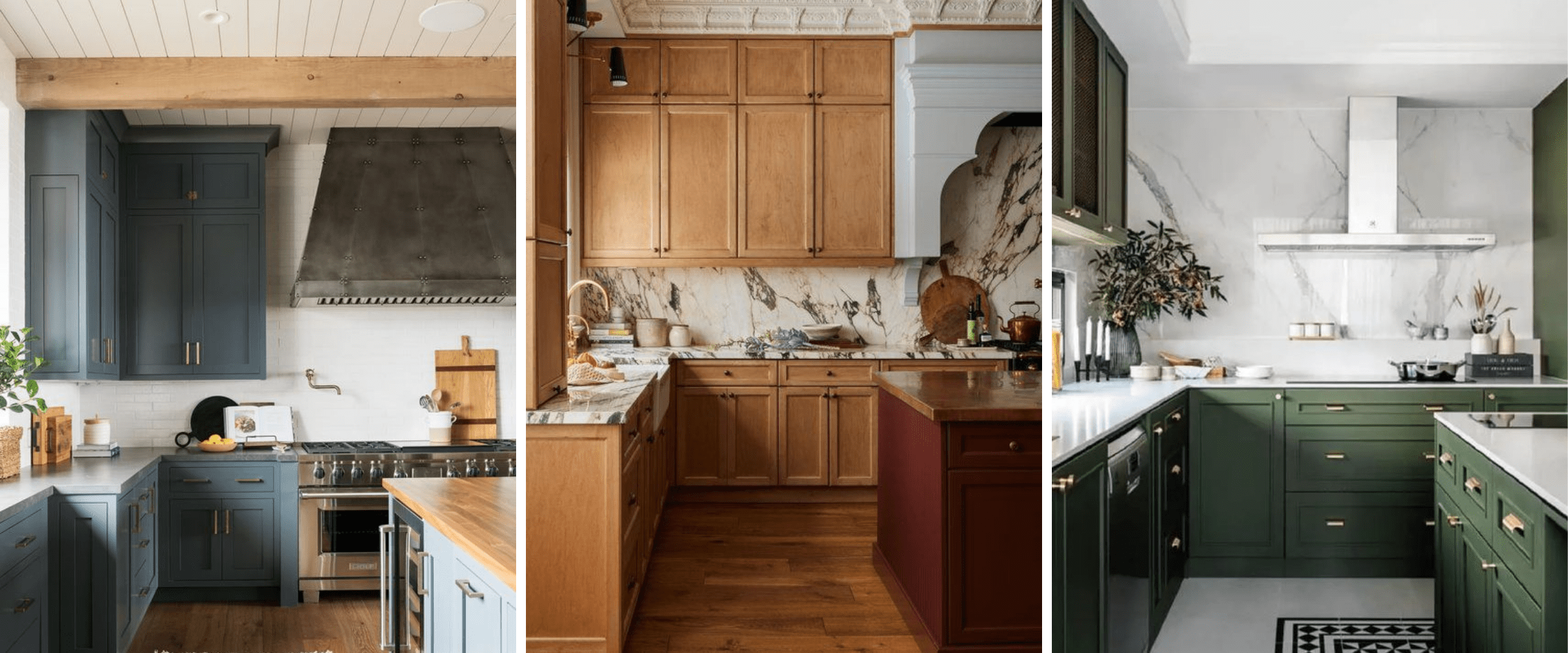
Smart Storage Solutions
The key to a well-organized kitchen is smart storage. Think pull-out pantries for easy access to ingredients, corner drawers to utilize tricky spaces, and custom drawer dividers for utensils.
Transparent storage containers are a game changer in a kitchen. Not only do they look neat but they also let you see what’s inside at a glance.
Innovative solutions like toe-kick drawers can utilize the space at the bottom of your cabinets, perfect for storing items you don’t use daily. I love storing baking trays in these nifty drawers. Imagine creating a toe-kick drawer that’s the length of a bank of cabinets to store things like brooms and even your Dyson cordless vaccum.
Efficient Kitchen Layouts
The layout of your kitchen is crucial to maximizing efficiency. The classic work triangle, which positions the refrigerator, stove, and sink in a triangular layout, minimizes unnecessary movement.
For larger kitchens, consider adding a kitchen island, which can serve as additional prep space, a casual dining area, and storage. If space is limited, a mobile island can offer great flexibility.
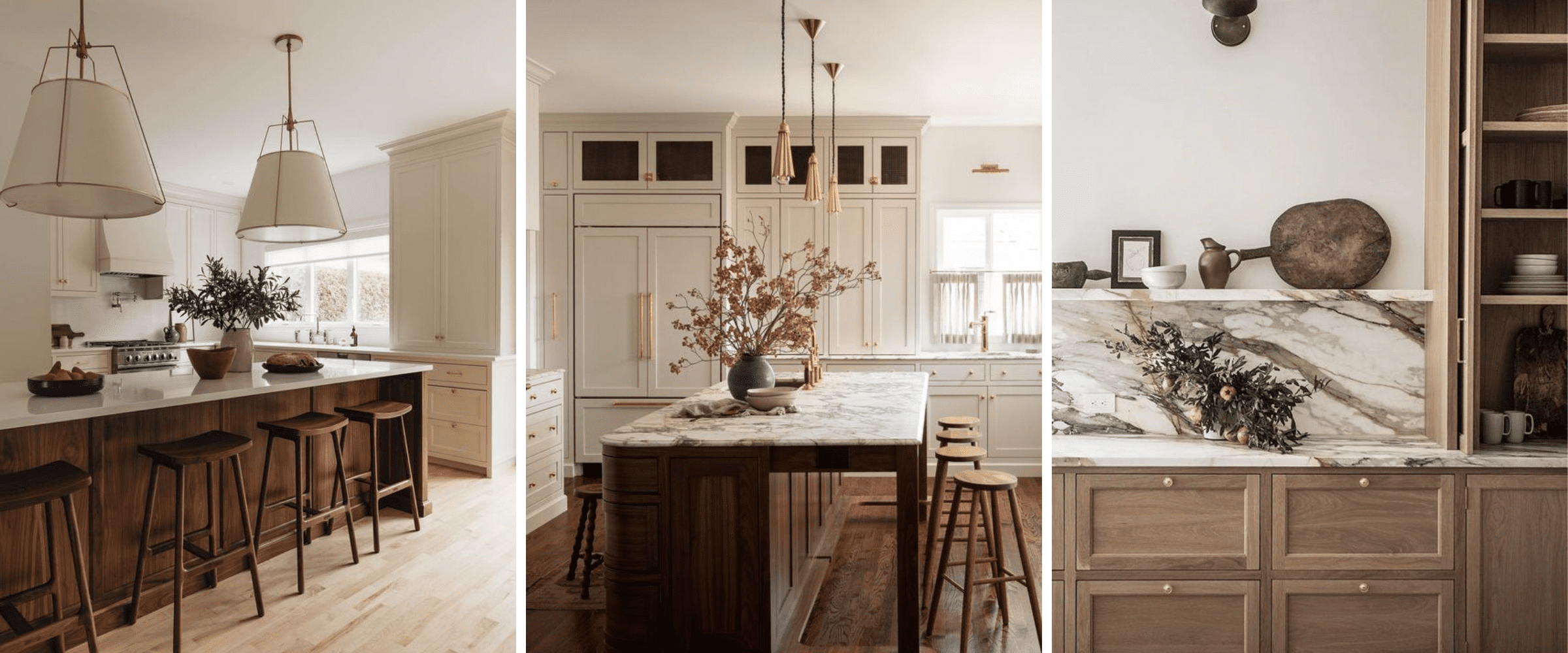
Aesthetic Considerations
When delving into kitchen design ideas, aesthetics play a crucial role in creating a space that’s not just functional but also a joy to be in. We wouldn’t be good designers if we didn’t talk about how the look and feel of your kitchen should reflect your personal style while creating a welcoming and comfortable atmosphere.
Functional Aesthetics
The design should marry functionality with aesthetics. That goes without saying, right? This includes choosing cabinetry and storage that are not only practical but also complement the kitchen’s overall look.
Sleek, handleless cabinets can offer a minimalist and modern feel, while glass-fronted doors can display beautiful dishware and add a touch of elegance. However, be sure to balance your storage needs with solid cabinet doors where you can keep any clutter out of sight too.
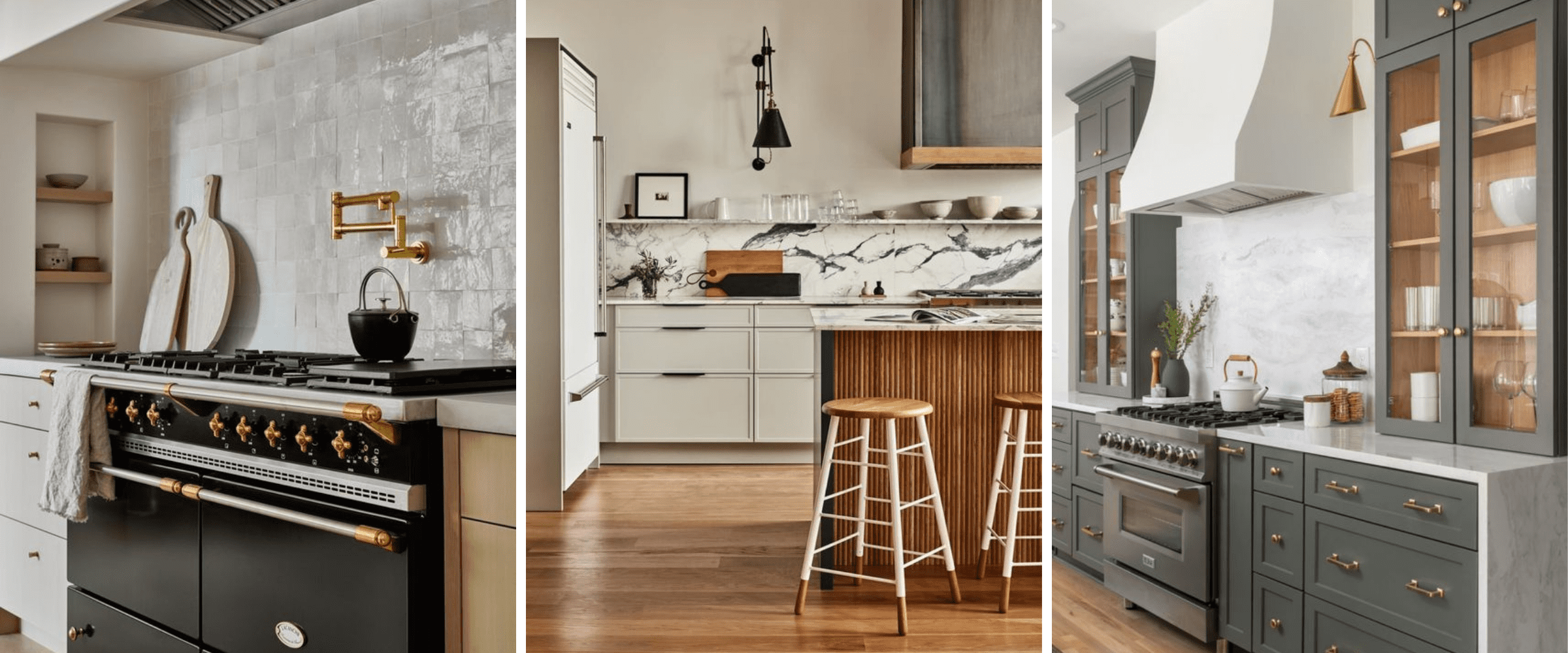
Color Schemes and Materials
The choice of colors and materials can dramatically affect the mood and style of your kitchen. Neutral palettes, such as whites, grays, or earth tones, offer a timeless appeal and can make the space feel larger and brighter.
For a more dynamic look, you can add bold colors through accents like backsplash tiles or statement lighting. When it comes to materials, natural stone, wood, and stainless steel are popular choices for their beauty and durability.
Incorporating a mix of materials can add depth and interest to your design.
Flooring Choices
Flooring plays a significant role in the kitchen’s overall look. It needs to be durable to withstand heavy foot traffic and potential spills, but also stylish. Hardwood floors offer warmth and a classic look, while ceramic tiles can be found in a variety of colors and patterns to match any design theme.
Alternatively, vinyl or laminate flooring can mimic the look of more expensive materials at a fraction of the cost. You have lot of options when it comes to finding the right flooring for your kitchen.
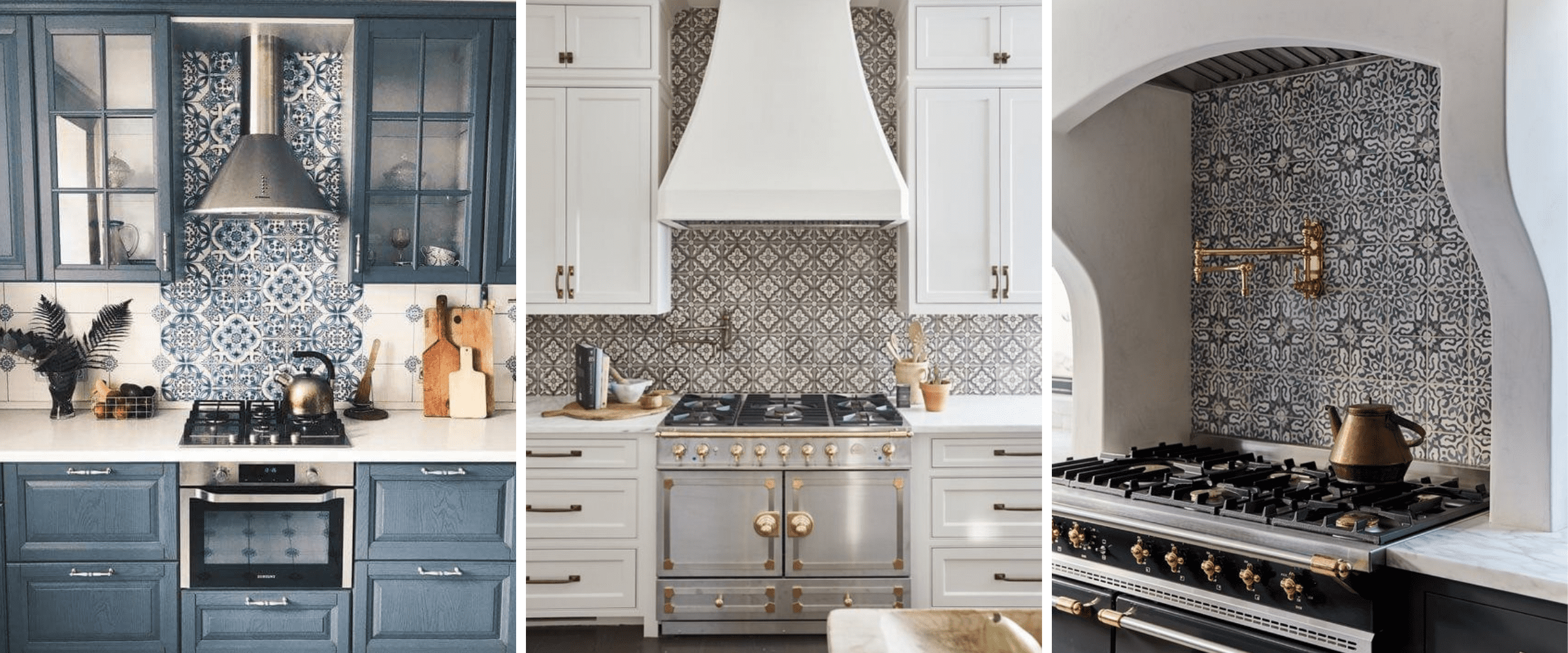
Backsplash as a Focal Point
The backsplash can be a striking focal point in your kitchen. Whether you choose a subtle pattern that complements your countertops or a bold, colorful mosaic, it’s an opportunity to add a unique touch to your kitchen’s design. I always consider the area where the range with the backsplash and the hood is to be the focal point of any kitchen. So like the focal point in any other room, make sure yours commands attention when someone enters the kitchen.
Lighting Design
Lighting is not just functional; it’s a critical design element in every room.
Layered lighting solutions can enhance both the ambiance and usability of your kitchen. Task lighting, such as under-cabinet lights, ensures safety and efficiency in food preparation areas.
Ambient lighting, like a grouping of stylish pendants, create a warm and inviting atmosphere. Accent lighting can be used to highlight architectural features or display pieces. The key is to have a flexible lighting scheme that can be adjusted based on the time of day and the task at hand.
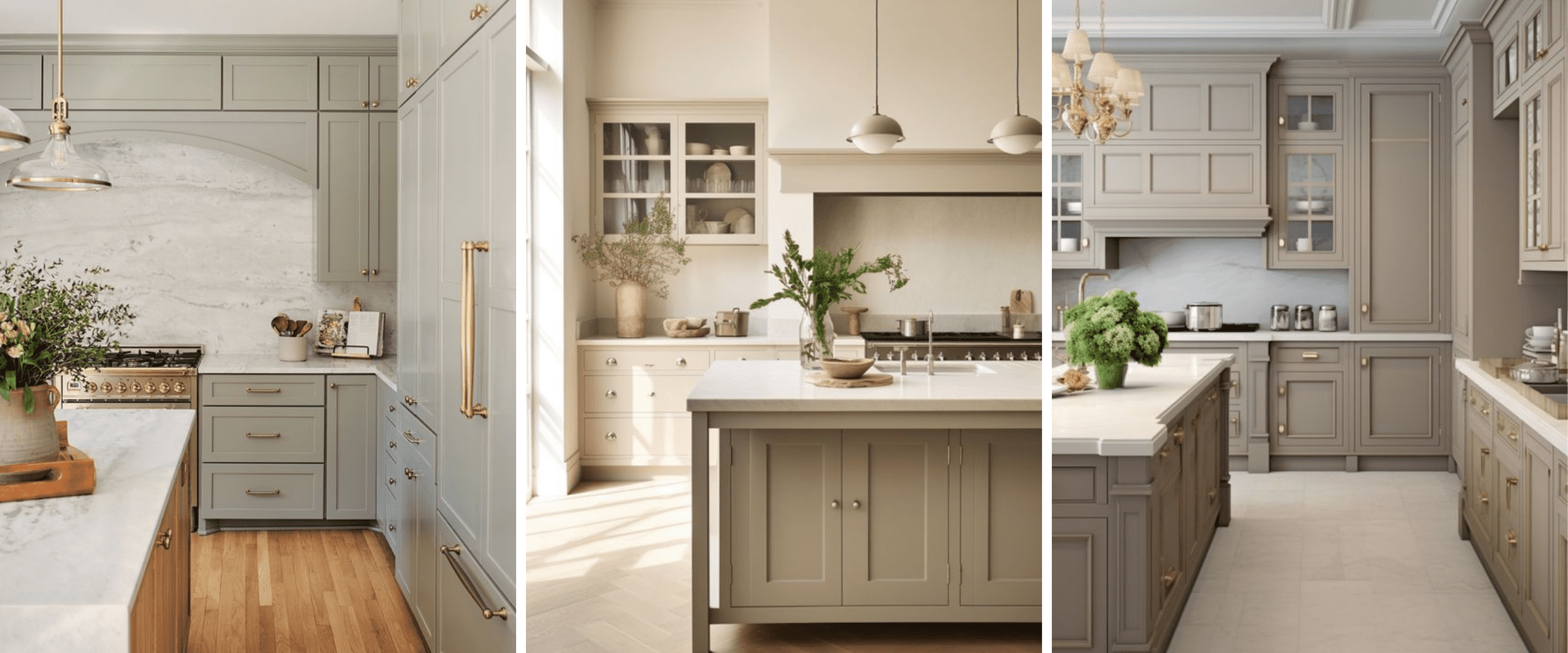
Personal Touches and Decor
Displaying artwork, adding a colorful rug, or showcasing unique dishware can inject your personality into the space. Think about open shelving to display items that reflect your style or a feature wall with an eye-catching wallpaper or color.
Balancing Style with Longevity
While it’s important to choose a style that you love, it’s equally important to consider how it will age. Opt for a design that you will be happy with for years to come, and that can adapt to changing trends with minor updates. Your wallet will thank you!
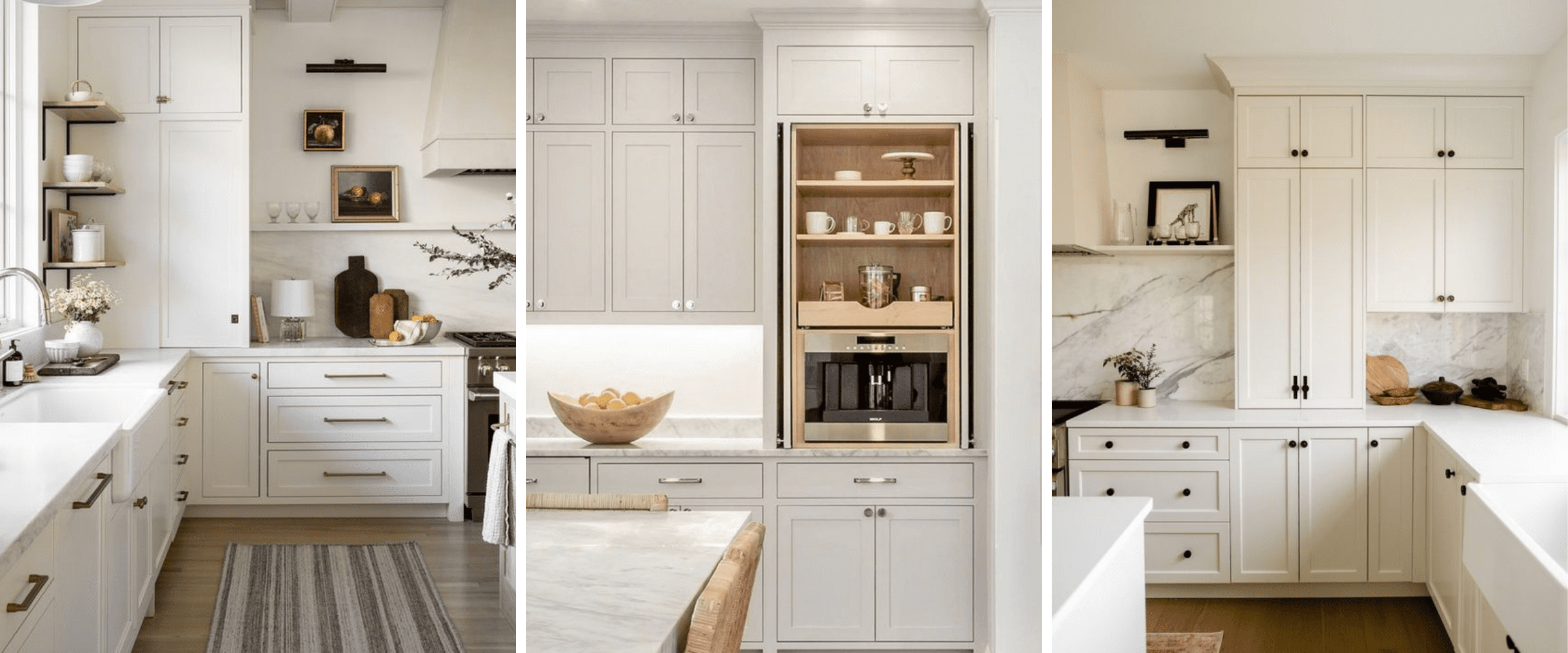
Incorporating Modern Technology
In the current landscape of kitchen design ideas, integrating modern technology is not just a luxury, but a necessity for the busy homeowner. Smart technology in the kitchen boosts efficiency, enhances convenience, and elevates the overall cooking experience.
Essential Smart Kitchen Appliances
The heart of a tech-savvy kitchen lies in its appliances. Smart refrigerators with features like touch screens, internal cameras, and connectivity to your phone allow you to check what you have while you’re at the grocery store.
Ovens with remote start and monitoring capabilities enable you to preheat your oven on your way home or check your dish’s progress from your smartphone. Induction cooktops, known for their energy efficiency and safety, also offer precise temperature control.
Enhancing Efficiency and Convenience
Smart gadgets can transform mundane tasks into efficient processes and just generally make life easier for you.
A voice-activated faucet that can dispense a precise amount of water for your pasta or imagine a smart dishwasher that you can control and monitor from your phone. Wouldn’t these things just make life that much easier?
Even small appliances, like smart coffee makers programmed to have your morning coffee ready when you wake up, add significant convenience.
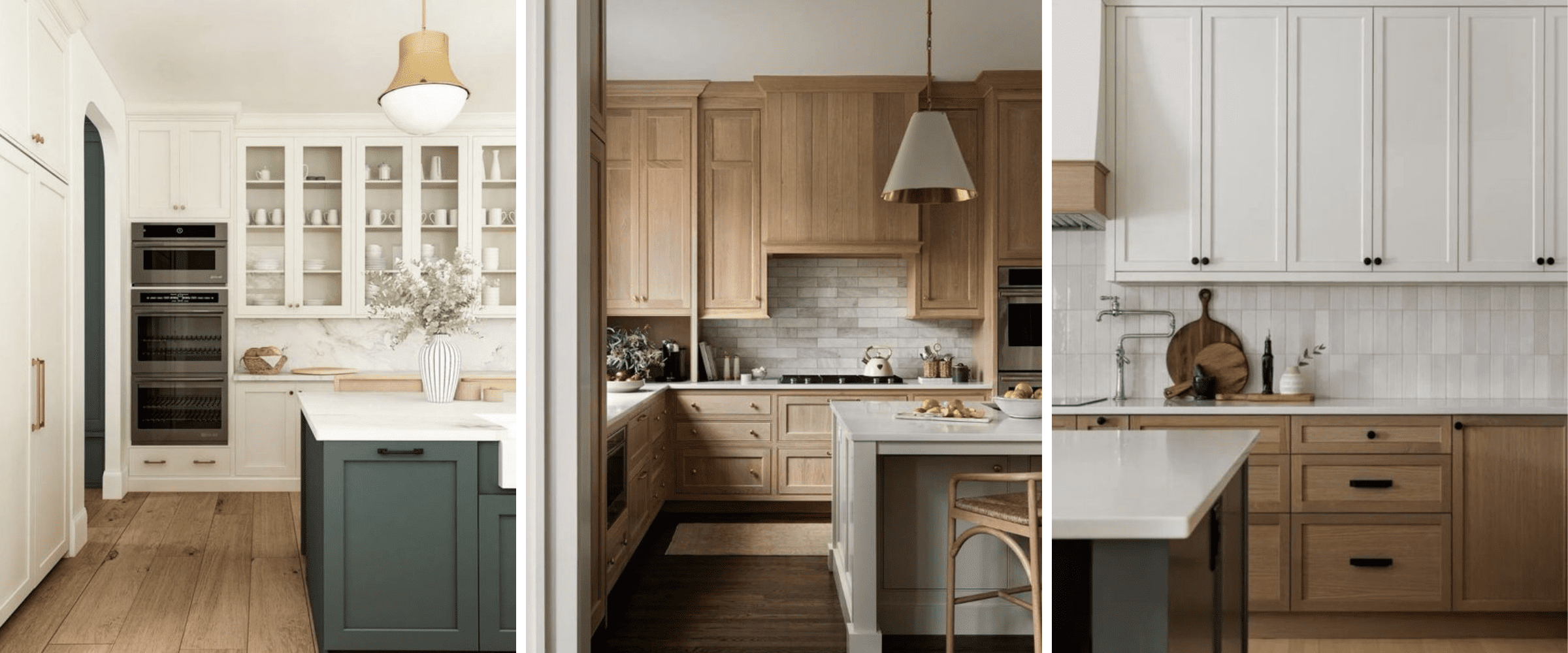
Seamless Technology Integration
The key to incorporating technology is to ensure it blends seamlessly with the kitchen’s aesthetic. You don’t want the kind of things that will stick out like a sore thumb in your kitchen.
Built-in screens or projectors can display recipes, watch cooking videos, or even double as a digital art display when not in use. a good appliance garage is a must have in a modern kitchen.
I love hidden charging stations in drawers and wireless charging spots integrated into countertops to keep devices charged without visual clutter. And is this section kinda making you feel like you’re living life like The Jetsons, no?
Sustainable and Eco-Friendly Options
As homeowners become more environmentally conscious, there’s a growing demand for kitchens that not only look good but also minimize their impact on the planet. Here are some ways you can incorporate sustainable practices and materials into your kitchen, combining eco-friendly living with stylish design.
Energy-Efficient Appliances
One of the most significant steps towards an eco-friendly kitchen is investing in energy-efficient appliances.
Look for refrigerators, dishwashers, and ovens with high Energy Star ratings, which use less electricity and water. This not only reduces your carbon footprint but can also lower your utility bills.
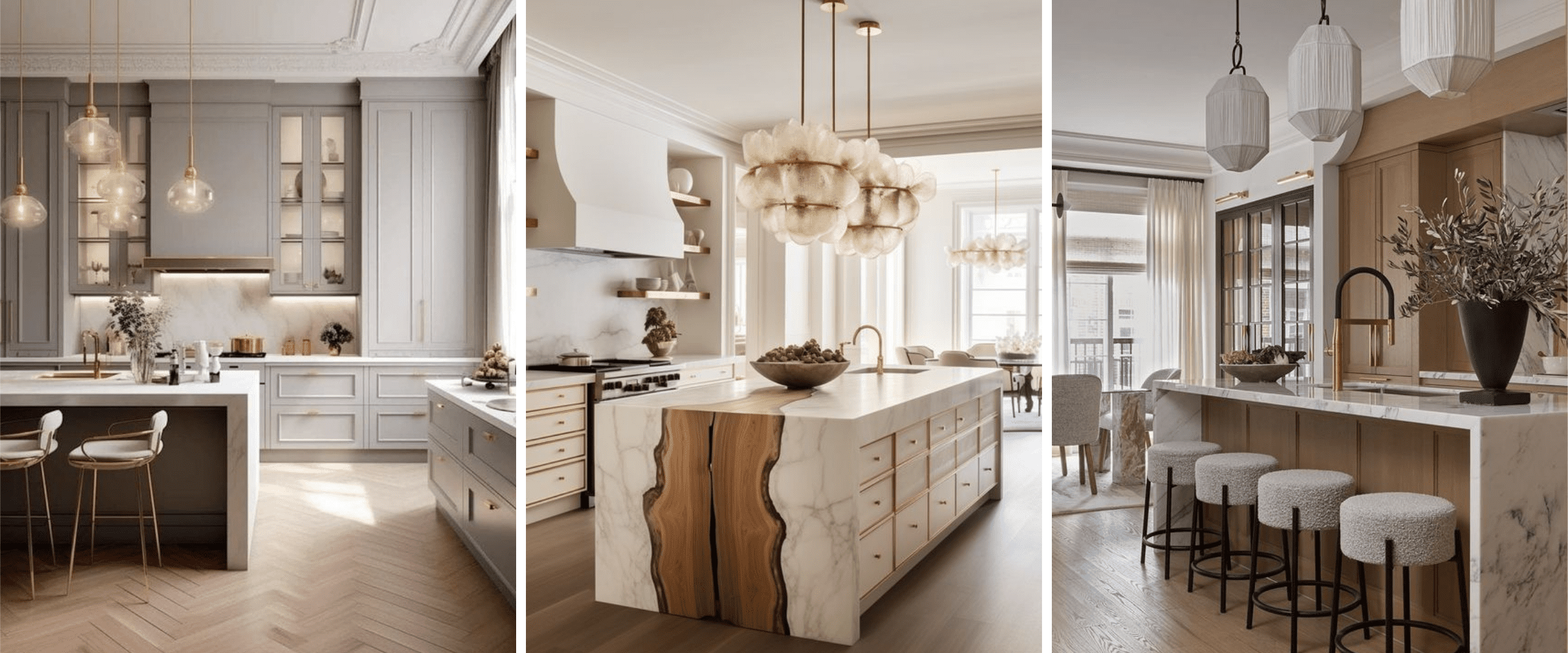
Sustainable Lighting Solutions
LED lighting is a fantastic choice for the eco-conscious homeowner. LEDs consume significantly less energy than traditional bulbs and have a much longer lifespan, making them both cost-effective and environmentally friendly.
Natural lighting also plays a vital role; consider larger windows or skylights to maximize daylight, reducing the need for artificial lighting.
Waste Reduction Strategies
Implementing waste reduction strategies is key to a sustainable kitchen. A well-planned recycling station, composting solutions for organic waste, and using reusable containers for storage can significantly reduce the amount of waste generated in your kitchen.
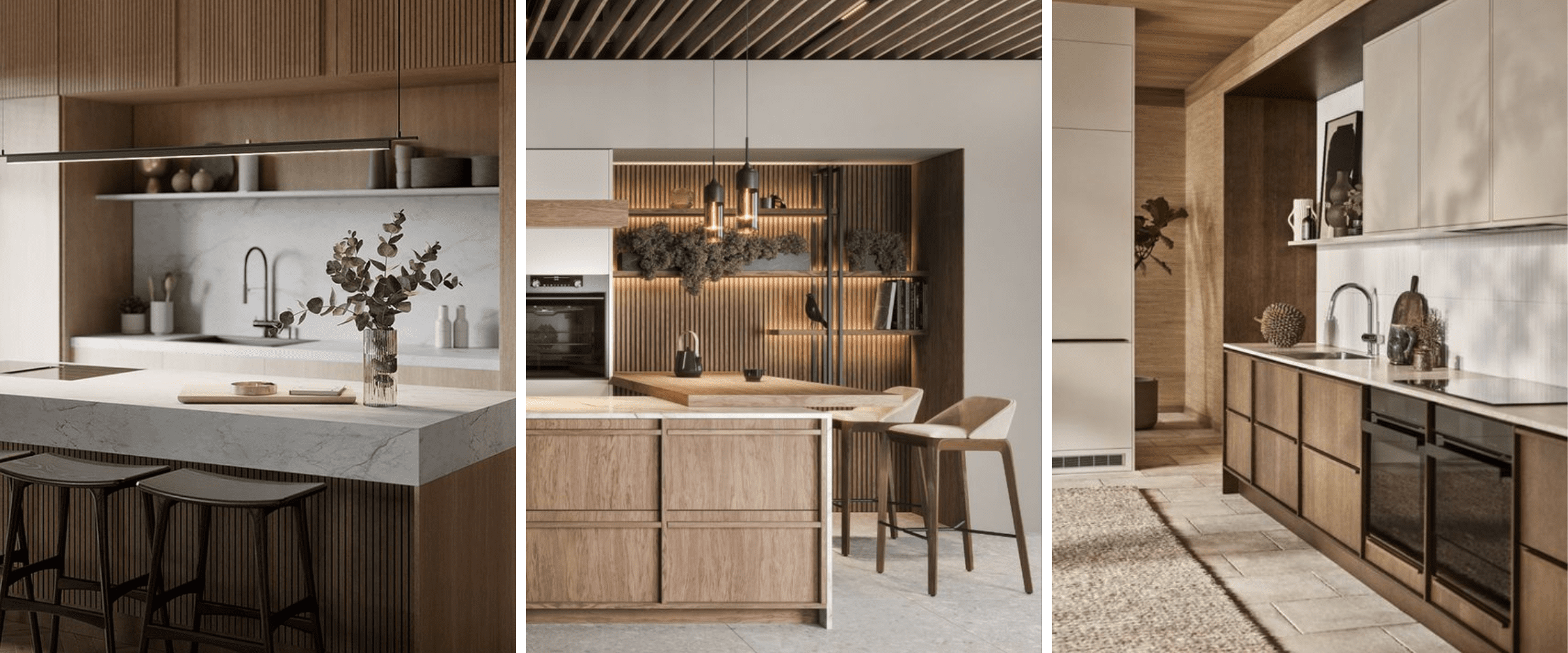
The perfect kitchen strikes a balance between functionality and aesthetic appeal. It’s a space that caters to your daily needs while also providing a sense of joy and tranquility. Remember, the best kitchen is one that works for you and your family, accommodating your lifestyle, cooking habits, and personal tastes.
Every kitchen has a story, and we’d love to hear yours. Share your experiences, photos, or tips with us on Instagram at @daakorinc. If you’re seeking professional advice, our team is here to help guide you.

